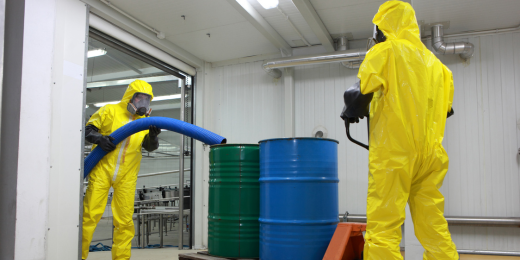What Does Reclaim Waste Do?
What Does Reclaim Waste Do?
Blog Article
Some Of Reclaim Waste
Table of ContentsReclaim Waste Fundamentals ExplainedUnknown Facts About Reclaim WasteEverything about Reclaim WasteAll about Reclaim WasteNot known Factual Statements About Reclaim Waste
Domestic sewage waste refers to the waste and products from a property septic container. The correct administration and disposal of residential sewage waste need fluid waste to be transferred to a sewer treatment plant where the appropriate techniques and devices are used to purify and dispose of waste.
Business waste often includes prospective hazards, such as combustible products or a combination of liquid and strong waste products, and requires an extra innovative and in-depth disposal process. The disposal of commercial waste commonly includes the filtering of waste prior to transport to guarantee secure and proper disposal. Industrial waste is developed from byproducts and overflow of industrial processes and production.
This kind of waste can not utilize the exact same sewer monitoring transportation or processes as septic or business fluids. The industrial waste management procedure needs the assessment and screening of liquid waste before it goes through the disposal procedure (industrial wastewater treatment). Drainage waste is the liquid waste that comes from runoff and excess stormwater in very populated areas or cities
Runoff waste can trigger contamination and flooding if not handled effectively. Find out more regarding drain cleaning and waste monitoring. Making sure correct waste monitoring can protect against catastrophes and minimize environmental harm. Both people in residential setups and professionals in commercial or manufacturing sectors can gain from recognizing the processes and guidelines of liquid waste administration.
The Greatest Guide To Reclaim Waste
Contact PROS Services today to learn concerning our waste administration and disposal solutions and the proper ways to look after the fluid waste you generate.
(https://gravatar.com/maximum5d830db060)Do you understand what takes place to your water when you end, purge the commode or drain pipes the washing machine? No? Well, it deserves understanding. This supposed 'wastewater' is not just a vital resource however, after treatment, will certainly be released to our land, waterways or the sea. Used water from bathrooms, showers, baths, kitchen sinks, washings and commercial procedures is referred to as wastewater.

water used to cool down machinery or tidy plant and tools). Stormwater, a form of wastewater, is overflow that moves from agricultural and city locations such as roofings, parks, yards, roadways, courses and rain gutters into stormwater drains pipes, after rainfall. Stormwater streams neglected directly to local creeks or rivers, ultimately getting to the ocean.
Reclaim Waste Things To Know Before You Get This
In Queensland, the majority of wastewater is treated at sewage treatment plants. Wastewater is delivered from domestic or commercial websites through a system of sewage systems and pump stations, recognized as sewage reticulation, to a sewer treatment plant.
The Department of Natural Resources suggests city governments regarding handling, visite site operating and keeping sewerage systems and treatment plants. In unsewered locations, city governments may need homeowners to mount individual or family sewer treatment systems to treat domestic wastewater from commodes, kitchens, restrooms and laundries. The Division of Natural Resources authorizes using household systems when they are proven to be effective.
In some brand-new neighborhoods, therapy of some stormwater to eliminate clutter, sand and gravel has actually begun utilizing gross pollutant catches. Wastewater therapy occurs in four stages: Gets rid of solid matter.
Makes use of tiny living organisms recognizes as micro-organisms to damage down and get rid of staying liquified wastes and fine particles. Micro-organisms and wastes are included in the sludge.
Not known Factual Statements About Reclaim Waste
Nutrient removal is not readily available at all sewer therapy plants due to the fact that it needs costly specialist equipment. Clear fluid effluent created after treatment may still contain disease-causing micro-organisms - liquid waste removal melbourne.

This generally suggests wastewater needs to be dealt with or pollutants gotten rid of prior to it can be discharged to rivers. Many wastewater moves right into the sewerage system. Under the Act, local federal governments provide approvals and permits for environmentally pertinent tasks (ERAs) entailing wastewater releases that might have a neighborhood impact. The department carries out approvals and permits to ERAs entailing wastewater releases that could have a regional or statewide impact.
Getting The Reclaim Waste To Work
Tracking offers accurate info concerning water top quality and can validate that permit conditions are being fulfilled. The info gotten with surveillance provides the basis for making water quality decisions.
Report this page